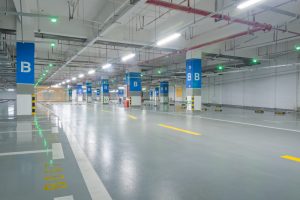FBI Probes Into Ethics of High-Speed Trading in the Stock Market

 If someone were to say the words “New York Stock Exchange” right now, what scenes would your mind immediately go to? Floors flooded with bespectacled investors waving their arms in indecipherable patterns? Neon lights blinking and red text scrolling across digital banners as far as the eye can see? Computer monitors lined up end-to-end that stretch across the entire room?
If someone were to say the words “New York Stock Exchange” right now, what scenes would your mind immediately go to? Floors flooded with bespectacled investors waving their arms in indecipherable patterns? Neon lights blinking and red text scrolling across digital banners as far as the eye can see? Computer monitors lined up end-to-end that stretch across the entire room?
All of that, yeah. And as it turns out, reality isn’t too far off from the stereotypical depictions. But what you don’t know about those monitors is what’s happening just under the surface — and the FBI recently opened up a probe into them in order to investigate if they’re actually helping investors engage in insider trading.
That’s because certain traders have utilized a high-speed fiber-optic cable that travels at two-thirds of the speed of light, linking traders in Chicago with those in New York. The cable gives them a 3-millisecond speed boost over normal trading times, something that’s raised the suspicions of the FBI. Add in author and journalist Michael Lewis’ claims that the stock market is somehow “rigged” and you have a perfect firestorm for what’s currently happening on the floors of the NYSE and beyond.
To offer a bit of perspective, take a look at what high-speed trading has done for the entire industry. In 2000, the Sandamp;P 500’s daily average volume of traded shares was somewhere around 2.85 billion, but today, those high-speed cables have allowed that number to balloon to nearly 14 billion. In other words, more trades are happening at much higher speeds. So, how does that constitute a “rigged” market, exactly?
Essentially, you can trade your stocks and bid on other ones based on the price you see, but if a trader with a high-speed cable can get to your exchange first (which he will), he’ll get the lower price and you’ll get it for a few pennies more. It’s a race to the finish, and with high-speed cables on your side, you’re slated to hardly ever lose.
“It’s trading on steroids,” according to David Weiss, a senior analyst at the Aite Group research advisory firm.
These kinds of quick-draw trading methods have carried over into the types of stocks purchased, with the trades du jour mostly consisting of mobile apps like King Digital Entertainment (makers of the ubiquitous Candy Crush Saga) and even social networking giants like Facebook, which went public for $7 billion and $100 billion, respectively. Some experts have worried that this kind of shortsighted gobbling up of booming tech stocks could lead to a burst bubble similar to the scenario that befell the market just 14 short years ago.
“It’s widely believed that high frequency trading algorithms are responsible for more than half of U.S. equities trading,” explains Sujoy Bhattacharya, founder and CEO of TradeGreeks LLC. “I think it’s important that regulators are looking into this rather opaque but statistically significant area of our markets to ensure retail customers, who lack expensive data centers and lightning-fast internet connections are still getting best execution and fair prices for their equity trades.”
In the end, the market’s always worth watching because of how dynamic it is. After all, the next big trade might be just moments away.
Like this:
1711 candy crush soda, 2699 candy crush all help, 2951 candy crush cheats, 2951 candy crush help, 3788 candy crush saga, 3911 candy crush, 4082 candy crush saga, 663 candy crush soda, about candy crush, add candy crush to facebook, addicted to candy crush saga, all about candy crush, all red candy crush levels, candy cane crush saga, candy crush ads list, candy crush jelly game, candy crush l, candy crush on my phone, candy crush soda vs saga, candy crush unlimited boosters, candy crush upgrade.






